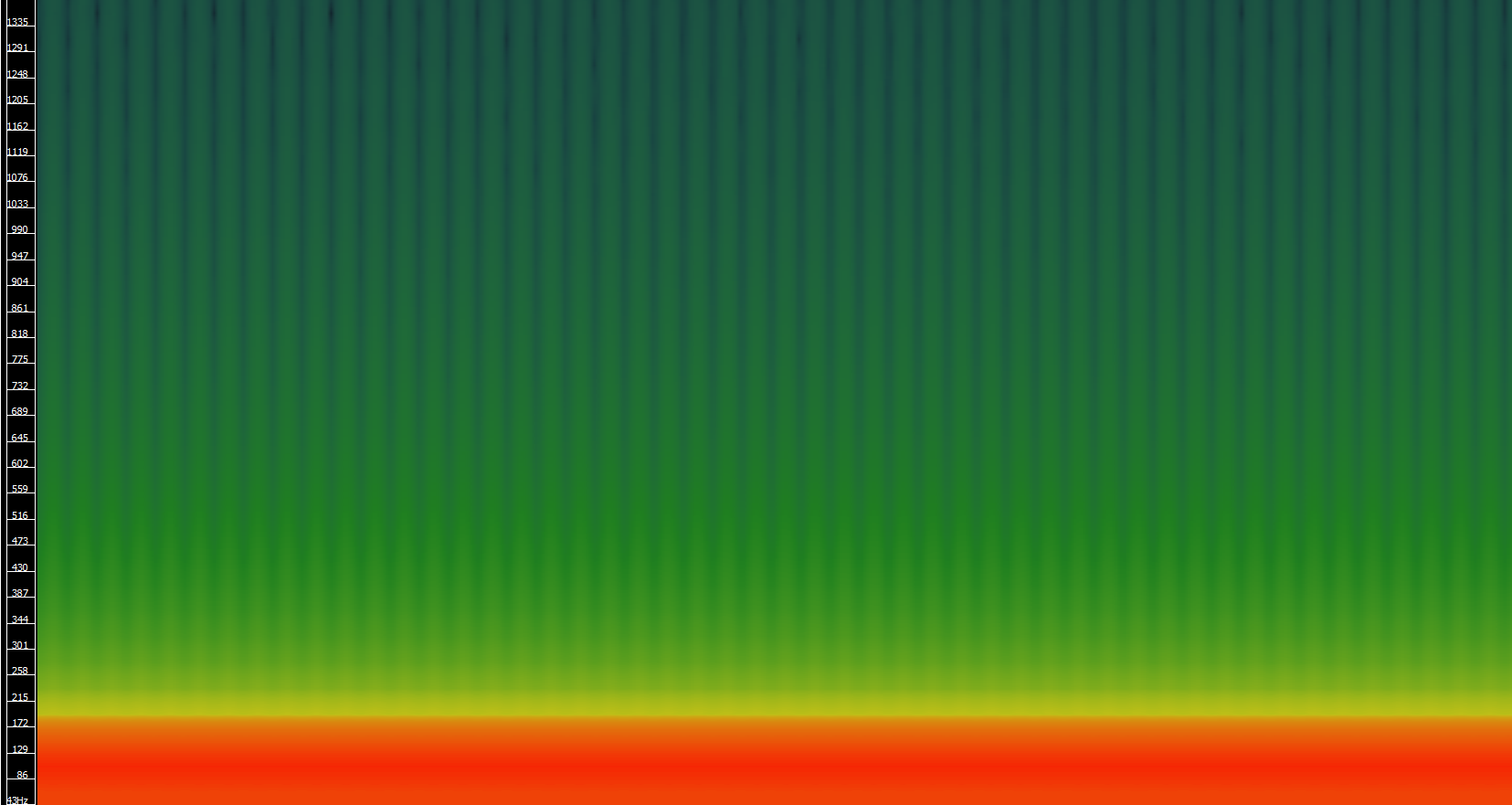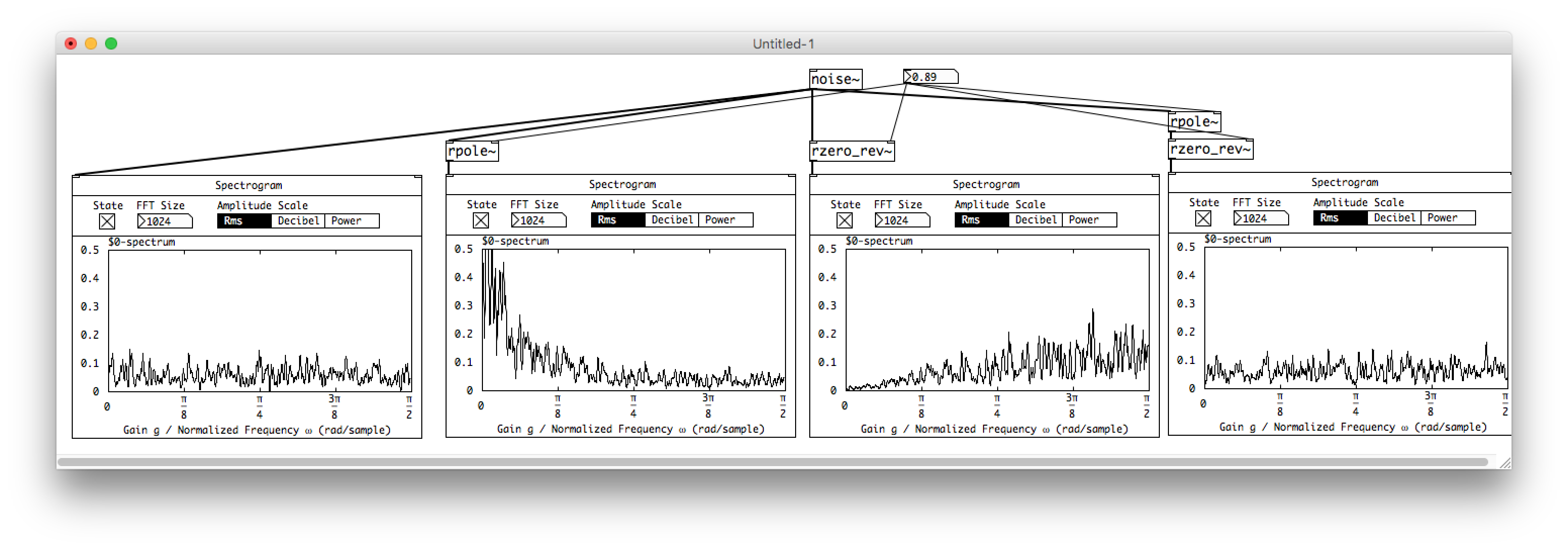unexpected spectrogram?
Hey guys, I just tried to record a simple osc~ 80 Hz in a wav file.
When I open the file in sonic visualiser to get the spectrogram I wasn't expecting it to be like this but to clearly show a red line at 80Hz and nothing else..? What am I missing? Spectrogram attached.
Thanks
Analyzing & Synthesizing a Cowbell
In Sonic Visualizer, there's a spectrogram option called 'Bins' that, when I set it to 'Frequencies', seems to show precise frequencies like SPEAR, but with a higher resolution/more info. I'll try using that for a new analysis and see if it helps...
I guess I should read through the SV documentation at some point.
Hearing Loss Simulation
@Azoso Hello and welcome to the forum.
It can all be done of course.
I would recommend starting with an installation of Pd extended if possible, rather than Vanilla, as at least one of the tools that you need (spectrum analyser) is then immediately available in the download.
If you are using a recent 64-bit mac os then that will not be possible, and things get more complicated.
You will then need to use "help" "find externals" from the Menu of Pd and download all the externals.
You can always switch to Vanilla later when you know more about the workings of Pd "under the hood".
The spectrum analyser (probably the most difficult part of your project) can then be created instantly by placing an object [spectrogram~-help] in your patch. Then right-click it to open it.
You can see it working by connecting an [adc~] to the [spectrogram~] object instead of the [noise~] object...... and you will be inspired to continue.
Then change [spectrogram~-help] to [spectrogram~] so as to use it in your patch.
Come back when you get stuck!
David.
generate audio from image as spectogram
I misread the question. Forget the part about the histogram and just fit the spectrogram in a [rifft~] window.
Phaser / Chorus / Flanger
@Pierre-Guillot super thanks 
btw is the spectrogram object available in pd, or is it pd-extended stuff or a plugin... ?
Phaser / Chorus / Flanger
The pictures represent the spectrograms (sometime called sonograms). frequency X time and amplitude is represented by color.
rzero_rev and role are two lowpass/high pass filters (depending on the coefficients). Used together with the same coefficient, they become an allpass filter. The amplitude response is linear but the phase response varies depending on the coefficient; the phase of frequencies is more or less inverted depending on the coefficient. If you use several allpass filters in serie, more band of frequencies are dephased. If the filtered signal is fed back into the original signal, it generates at set of notch filters and peak filters due to the phase oppositions. The main difference with the flanger is the repartition of the filters (harmonic or not).


3d Spectrogram
Hi,
This patch just graphs amplitudes of your sample at frequencies in time.
It works best if you open the soundfile subpatch and load your own .wav file (otherwise just use the default sample).Then click the start render toggle, use the 'scrub' slider to move through the sample, and click and drag to move around in the gem window.
The other options include the number of FFTs to display, rotation of the spectrogram on the z axis, the zooming factor, or graph input from the microphone.
I think I fixed the error messages, and I added some more comments to the patch. The patch is probably more complicated than it needs to be, but it should work more clearly now.
Let me know if there are any more problems or anything.
3d Spectrogram
Hi there. I am very interested in learning how to use your spectrogram, but i am also hoping you could provide an explanation and perhaps tell me how to use it? thanks!!
michael
Whole freakin' library
So I decided to .zip up my whole library of working abstractions and post them here. A lot of the stuff I've already posted on the forum before, but many of them have been updated and/or been given much better helpfiles. Here's a few features of what's here:
-Various filters and biquad coefficient generators.
-Bandlimited oscillators, with features that aren't included in the ones I posted before (you don't have to manually instantiate [bl-init.mmb], and you can vary the number of harmonics).
-Complex math operators (some have been improved for efficiency and vanilla-friendliness).
-File browser.
-Mixer strips.
-A nice, flexible spectrogram.
-Interactive waveform display.
-State-saving/preset management stuff.
-Compressor and distortion effects.
...and a few other things.
Many of the helpfiles are dependent on other abstractions I made, so let me know if I didn't include something. I have a tendency to do that.
UPDATE: I've put this all up on GitHub now. Since there's more space there, you don't have to do anything with [bl-init.mmb] like before. It's taken care of.
3d Spectrogram
Hi everyone,
I couldn't find a finished 3d spectrogram for GEM so I made one. Hope its useful for someone. I'm pretty new to pd and especially GEM so any comments or suggestions improvements are welcome.
Enjoy!


